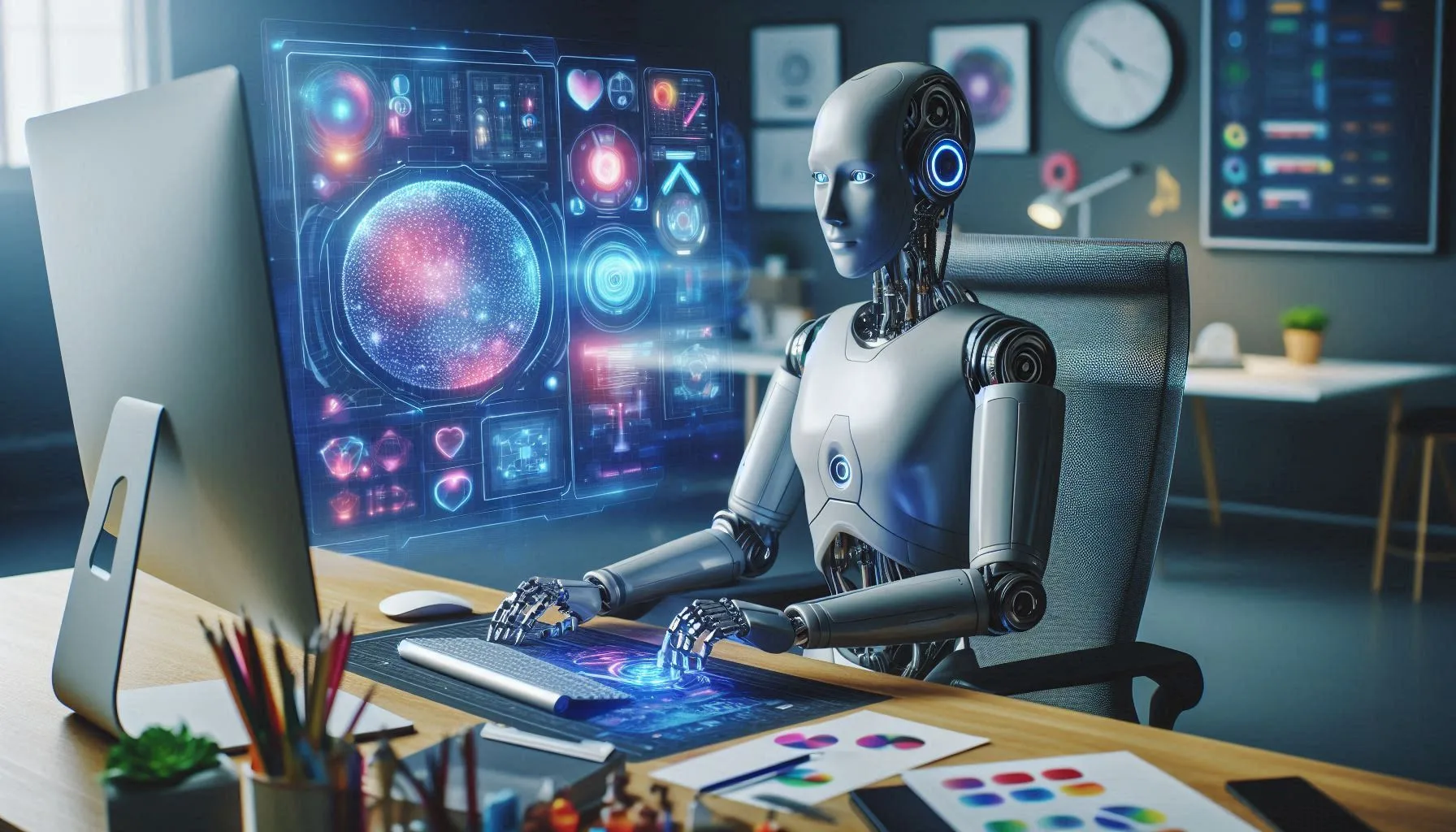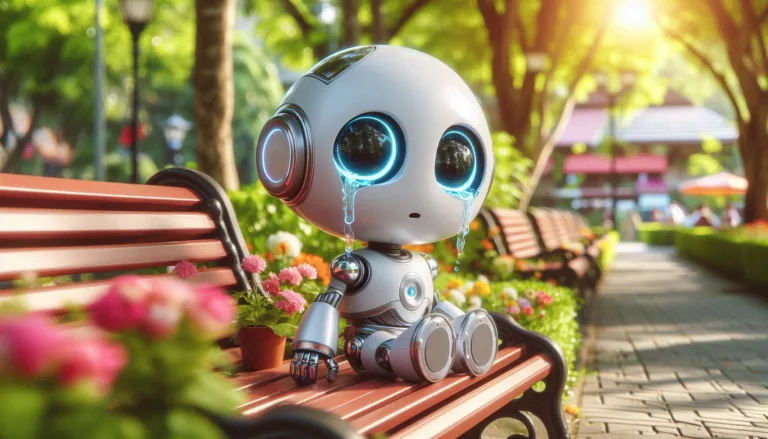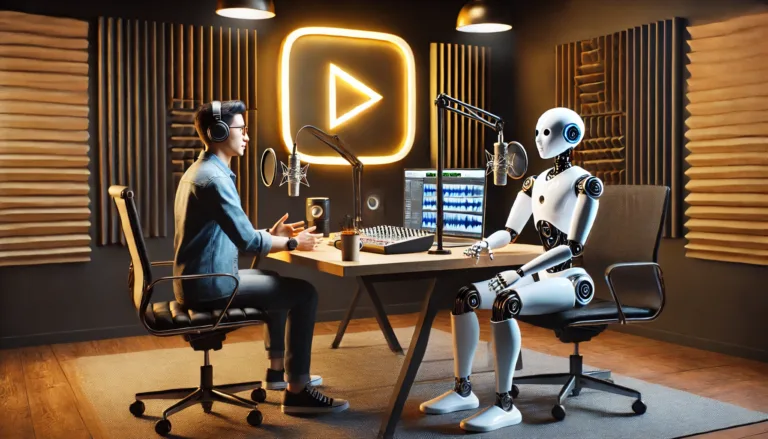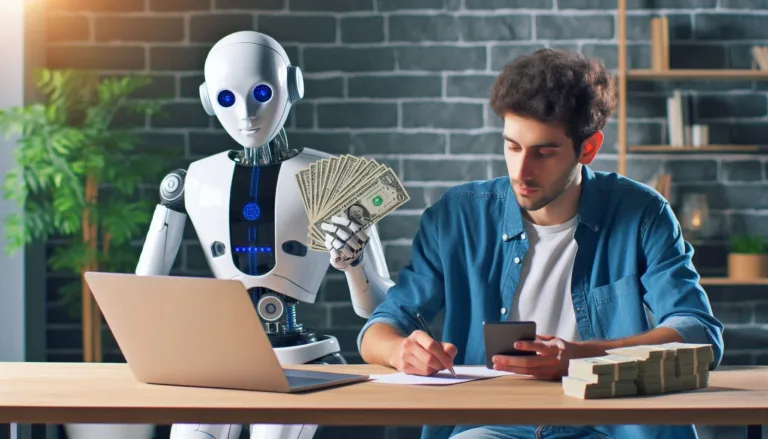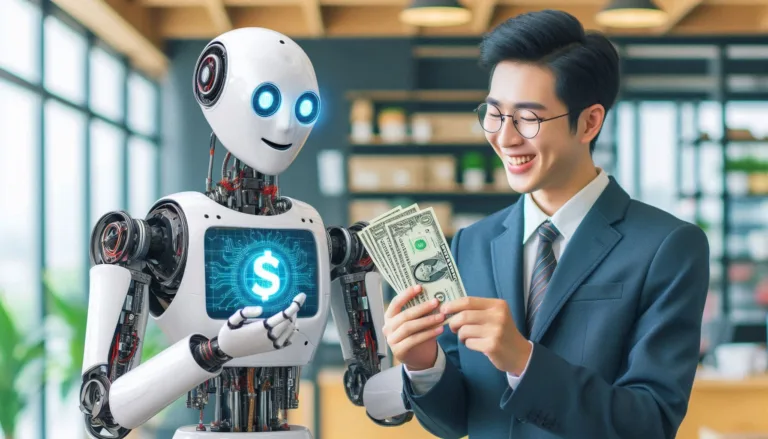Artificial Intelligence (AI) has become a powerful tool across industries, transforming processes and enhancing productivity. Graphic design is no exception. The AI revolution is reshaping the graphic design landscape, offering automation, personalization, and efficiency like never before. From streamlining tasks to inspiring creativity, AI tools are now essential for many designers. As we look toward the future, the potential applications of AI in graphic design promise even more innovation. Here’s an in-depth look at AI’s impact on graphic design today and how it could evolve in the years to come.
Current Role of AI in Graphic Design
AI plays several critical roles in modern graphic design. Here are some of the main ways AI is shaping the field right now.
1. Automating Repetitive Tasks
Graphic design involves several repetitive tasks, such as resizing images, color correction, and font pairing. AI tools streamline these tasks, enabling designers to focus on more complex and creative aspects of their work. Tools like Adobe Sensei, an AI platform integrated into Adobe Creative Cloud, help designers complete repetitive tasks in a fraction of the time.
For example, Sensei can automatically remove backgrounds from images or suggest colors that work well together based on industry standards. This automation reduces time spent on tedious tasks, enhancing productivity without compromising quality.
2. Enhancing Personalization
Today’s consumers expect personalized experiences. AI algorithms help graphic designers create tailored designs by analyzing user data. These algorithms can suggest design elements that resonate with specific audiences based on their preferences, age, location, and other demographics.
For example, in social media advertising, AI can analyze a brand’s target audience to suggest fonts, color schemes, or layouts that would appeal to them. Personalized designs increase engagement and build stronger connections with audiences, making AI a valuable asset in targeted marketing campaigns.
3. Generating Design Ideas
AI-powered design tools, like Canva’s Magic Resize or Designify, assist designers in generating new ideas by offering automated suggestions. These tools use machine learning to recognize patterns and generate elements that suit the designer’s needs. This helps reduce creative blocks and allows designers to explore new styles and formats they may not have considered.
Moreover, AI can analyze trends and predict which design elements will likely become popular, providing designers with data-driven insights for their creative processes. This predictive capability keeps designers one step ahead in a fast-changing industry.
4. Increasing Accessibility
AI is also helping make graphic design more accessible to individuals without formal training. User-friendly tools like Canva and Looka allow users to create professional-looking graphics using drag-and-drop interfaces powered by AI. These tools can suggest layouts, fonts, and color schemes, making it easier for non-designers to achieve professional results.
Accessibility democratizes graphic design, opening opportunities for small businesses and startups with limited budgets to create quality visuals without hiring a professional designer. As a result, AI-driven design tools are bridging the gap between professionals and beginners in the design space.
5. Enhancing Image Recognition
AI excels at recognizing patterns in images, which helps in several graphic design applications. For example, machine learning algorithms can detect objects, faces, and even emotions in images. This capability has been integrated into popular design software, allowing designers to categorize and search through large image libraries efficiently.
Adobe’s image recognition technology, for instance, enables designers to find images based on specific elements, such as “a beach at sunset” or “smiling children.” This makes the design process smoother, reducing the time spent searching for the perfect image.
Future of AI in Graphic Design
The future of AI in graphic design holds even more exciting potential. As technology advances, AI could transform the industry in unexpected ways, offering tools and capabilities that were once unimaginable.
1. Fully Automated Design Processes
While current AI tools help with specific tasks, the future may bring fully automated design processes. AI could handle entire design projects based on a few inputs, creating professional-level visuals without human intervention. This development could allow businesses to generate logos, social media posts, and other assets with minimal effort.
For example, a user could input their brand name, color preferences, and target audience, and the AI would produce a complete brand kit. Although this may reduce some aspects of creative control, it offers immense convenience for small businesses and entrepreneurs.
2. AI-Driven Augmented Reality (AR) and Virtual Reality (VR) Experiences
As AR and VR continue to grow in popularity, AI will likely play a significant role in designing immersive experiences. Designers could use AI to create augmented reality graphics or virtual reality environments that adapt to user interactions in real-time. For instance, AI could generate 3D elements that respond to a user’s movements or emotions, enhancing engagement and creating a more dynamic experience.
AR and VR design requires high levels of customization, which AI could handle more effectively than traditional design methods. This trend could lead to a new realm of interactive and personalized design that captivates audiences in ways flat visuals cannot.
3. Enhanced Collaboration Between AI and Designers
While some fear that AI will replace human designers, it is more likely that the two will collaborate more closely. Future AI tools could act as “co-creators” rather than mere assistants. AI could suggest ideas, provide insights, or even complete parts of a design while allowing the human designer to make the final calls.
This partnership would combine human creativity with machine efficiency, resulting in higher-quality designs produced faster. Instead of replacing jobs, AI could help designers push the boundaries of what is possible, fostering innovation in the industry.
4. Predictive Analytics for Design Trends
In the future, AI’s ability to analyze data could allow designers to anticipate design trends with greater accuracy. Machine learning models can analyze vast datasets to identify emerging patterns and predict which styles or colors will become popular. Designers could then incorporate these insights into their work, ensuring they remain ahead of the curve.
For instance, an AI-powered design tool might recognize that minimalistic styles are gaining traction and suggest simplified layouts and monochromatic color schemes. Predictive analytics will help designers stay relevant, increasing their designs’ longevity and appeal.
5. AI in User Experience (UX) Design
User experience (UX) design is an essential part of graphic design, especially for digital platforms like websites and mobile apps. AI could optimize UX design by analyzing user behavior and adjusting elements for a better experience. For example, AI could monitor where users click most frequently on a website and suggest adjustments to improve navigation.
This type of responsive design could lead to more intuitive interfaces and higher user satisfaction. Additionally, AI could use data from similar sites to recommend UX improvements, offering designers a competitive edge in optimizing their digital products.
6. Advanced Customization and Personalization
In the future, AI could offer hyper-customized designs tailored to individual users. Imagine a scenario where each visitor to a website sees a unique layout or color scheme based on their preferences and browsing history. AI-driven customization could increase engagement, especially in e-commerce and marketing applications where personalized content is highly effective.
This level of personalization would require sophisticated AI algorithms capable of processing large amounts of data in real-time. As AI advances, we can expect to see increasingly customized design solutions that cater to each user’s unique preferences.
The Benefits of AI in Graphic Design
AI in graphic design offers several benefits that enhance both the quality and efficiency of the design process.
- Time Efficiency: By automating repetitive tasks, AI frees up time for designers to focus on creative work.
- Data-Driven Decisions: AI can analyze trends and user data to suggest design elements that increase engagement.
- Accessibility: AI-driven tools make professional design accessible to those without formal training.
- Enhanced Creativity: AI tools provide new ideas and inspiration, helping designers explore fresh creative directions.
- Personalization: AI enables personalized designs, improving audience engagement and brand loyalty.
Challenges and Ethical Considerations
Despite its benefits, AI in graphic design presents challenges. One major concern is the potential for job displacement, especially for entry-level design roles. As AI becomes more capable, it may reduce the demand for certain tasks traditionally performed by junior designers.
Additionally, there are ethical considerations surrounding the use of AI-generated designs. For example, questions arise about ownership and originality when AI plays a significant role in creating a piece of work. Designers and companies will need to navigate these issues as AI becomes more integrated into the creative process.
Conclusion
AI has already made a profound impact on graphic design and will likely continue to shape the field in the future. From automating tasks to generating new ideas, AI offers invaluable support to designers today. As technology advances, we can expect AI to take on even more sophisticated roles, potentially creating fully automated design processes and enhancing user experiences through personalization and predictive analytics.
However, while AI opens many doors, human creativity remains at the heart of graphic design. The ideal future will see a collaborative relationship between AI and designers, leveraging the strengths of both to create compelling, innovative designs. In this evolving landscape, those who embrace AI while preserving the human touch will lead the way, redefining what’s possible in graphic design.
